
Contents



Gangneung Chodang Dubu







Focus · Written by Park Ji-eun, Kangwon Domin Ilbo
Photographed by Studio Kenn
Gangwon-do’s
Ever-Growing Appeal
The unforgettable scene of athletes from both Koreas not letting go of each other’s hands
through bus windows impressed the world. As the only divided province on Earth,
Gangwon-do Province, with a population of 1.5 million, has emerged as a global symbol of peace.
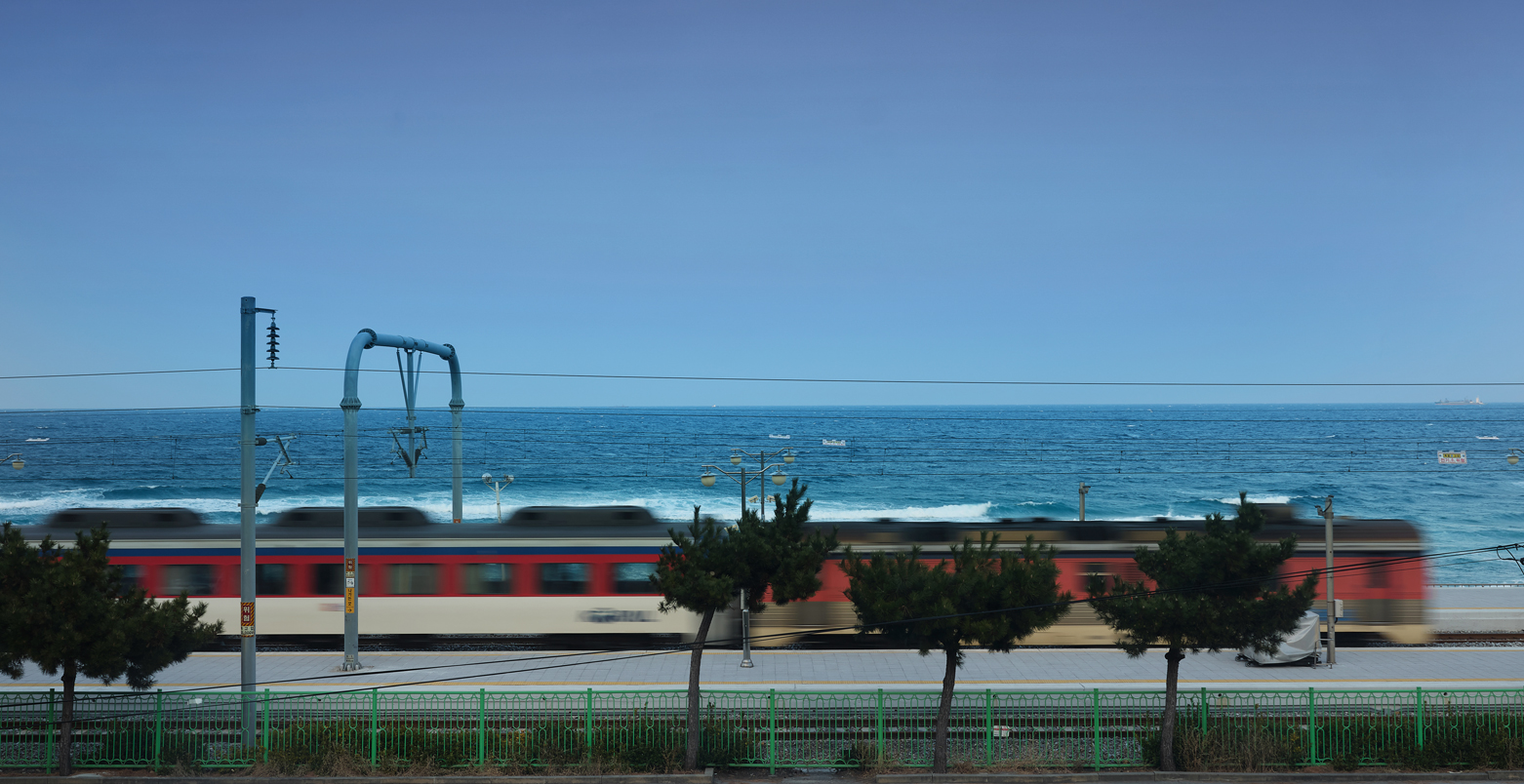
Before hosting the Winter Olympics last year, Gangwon-do Province was considered the least economically and socially developed of any provincial region in Korea, trapped in a vicious cycle of slumping development, efficiency and growth. Pyeongchang-gun County’s hosting of the Winter Olympics, however, turned things around for the region. Gangwon-do shed a longstanding image of isolation and underdevelopment through the event and prepared to attract more international visitors.
The province spent nearly KRW 14 trillion on the Olympic hosting process, with a major portion going toward social overhead capital (SOC) to establish an extensive traffic network including the bullet-train KTX Gyeonggang Line and Yeongdong Expressway 2. Another KRW 2 billion went toward stadium construction and KRW 3 billion toward the organizing committee’s operating expenses. These expenditures were considered funds for balanced regional development more than temporary expenses for the Olympics. With KTX service extending to Gangwon-do, the area’s living conditions improved as a constant stream of incoming tourists benefited the regional economy.
Gangwon-do saw both tangible and intangible benefits from the Olympics. Enhanced infrastructure in its cities and rapid tourism growth stemming from the successful Olympic hosting raised the province’s reputation both at home and abroad. In other words, Gangwon-do built a unique brand by marketing things exclusive to the province. Gangneung and the counties of Pyeongchang-gun and Jeongseon-gun also saw their individual brands rise thanks to the games.
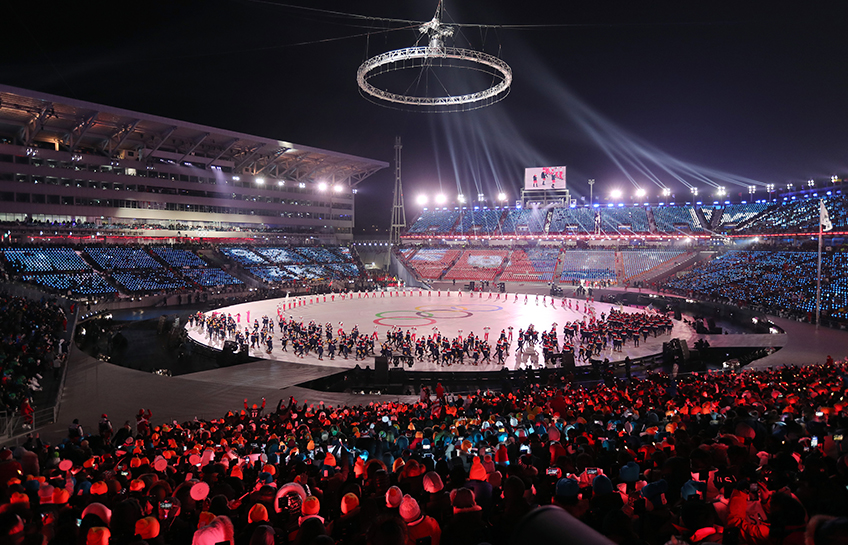
The opening ceremony of 2018 PyeongChang Winter Olympic Games © Gangwon-do
The Korea Tourism Organization performed an analysis of 3.5 million points of data on Gangwon-do from social media mentioned in a variety of languages like English and Japanese. Its study found a huge boost in the province’s image as an international travel destination. As the bridge between the Baekdudaegan mountain range and the East Sea, Gangwon-do formed a sports hub mentioned by foreign tourists through social media. The town of Jeongdongjin in Gangneung had the most mentions with 47,363 as it hosted ice skating events during the Olympics. The ski resort complex Alpensia in Pyeongchang-gun was second with 17,763, Daegwallyeong Hill third with 14,167 and the Buddhist temple of Waljeongsa fourth with 11,701. All corners of Gangwon-do grabbed the spotlight under the province’s still-resonating goals of “Culture, Environment, Peace, Economy, ICT Olympics.”
An estimated 17,000 volunteers ages 20-80 warmed up the Winter Olympics mood amid the bone-chilling cold. Their warm Gangwon-do-style hospitality is still remembered the world over.
Gangwon-do Province always offers a picturesque view. © Korea Tourism Organization
Model for Balanced Regional Development
The name “Gyeonggang” is a combination of the first parts of the names of the provinces Gyeonggi-do (Gyeong) and Gangwon-do (Gang). The KTX Gyeonggang Line, also known as the Olympic Line, connects Gangneung and the Seoul metropolitan area and allowed quick travel between both areas two months ahead of the Olympics’ opening ceremony. Bringing passengers from Seoul to Gangneung and vice versa within two hours, this transportation breakthrough saved people from a five-hour drive and potentially awful traffic during the Olympic period.
The opening of an expressway linking Seoul and Yangyang, another connecting Gyeonggi-do Province, Gwangju (Gyeonggi-do) and Wonju, and Yeongdong Expressway 2 came just in time for the Olympics. Having their driving time cut to under two hours between the eastern coast and the Seoul metropolitan area, tourists from Korea and abroad gained easier and more efficient access to Gangwon-do, which led to more balanced development of the province’s cities.
The PyeongChang Winter Olympics also shined a light on Gangwon-do areas near the border with North Korea. In May last year, the provincial government designated a peace zone spanning the border counties of Cheorwon-gun, Hwacheon-gun, Yanggu-gun, Inje-gun and Goseong-gun, all of which have lagged behind in development since the division of the Korean Peninsula more than 70 years ago. Military facilities in the area made it impossible for residents to own property there.
The socioeconomic crisis in the region and a more promising outlook for peace on the peninsula prompted the central government to lift or greatly relax regulations in the military-controlled area in the most sweeping changes of their kind in 24 years. The Defense Ministry removed military designation of land covering 337 million m2, making Gangwon-do the biggest beneficiary of this measure with 63 percent of its land released.
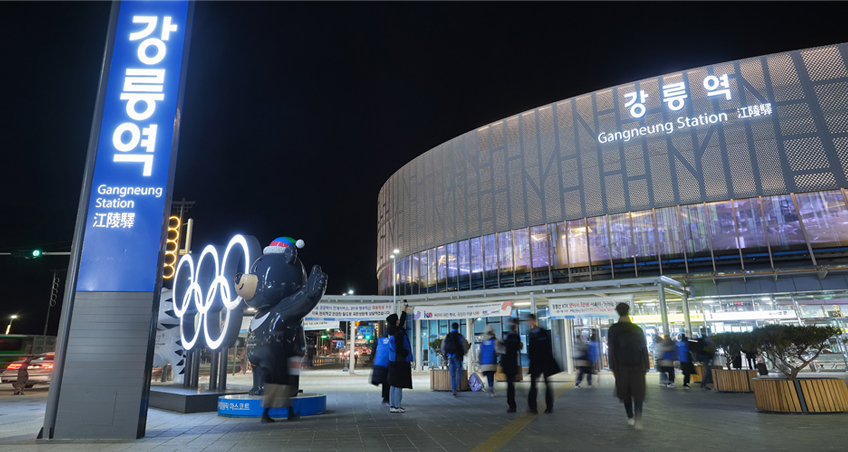
Gangneung Station, where the bullet train KTX runs, showcases the PyeongChang 2018 Winter Olympics’ mascot and symbol.
Peace-Building Rail Platform
Gangwon-do could also bring the two Koreas closer through rail. The Gyeonggang Line will connect the idle Donghae Bukbu (Northern East Sea) Line linking Gangneung to Jejin Station in Goseong-gun County. If this line is connected to the railway on North Korea’s eastern coast, it could usher in the era of travel to Europe through a Trans-Siberian railway. Should this happen, the provincial economy and tourism in Korea are expected to reap huge benefits.
Gangwon-do authorities are also considering a groundbreaking plan to offer package tours spanning travel to both Koreas, including a hiking program from Seoraksan Mountain in the South to Geumgangsan Mountain in the North without travel restrictions. This prospect requires the lifting of United Nations sanctions on North Korea in line with improving relations not just between both Koreas but also between the North and the U.S. As adopted in the Pyeongyang Joint Declaration in September last year, the setup of a joint development zone for inter-Korean tourism on the east coast is expected to combine the sea and mountains to attract visitors from all over the world. Thus ground, sea and air transportation could eventually lead to the peaceful opening of the North Korean port city of Wonsan, a potentially lucrative tourism destination.
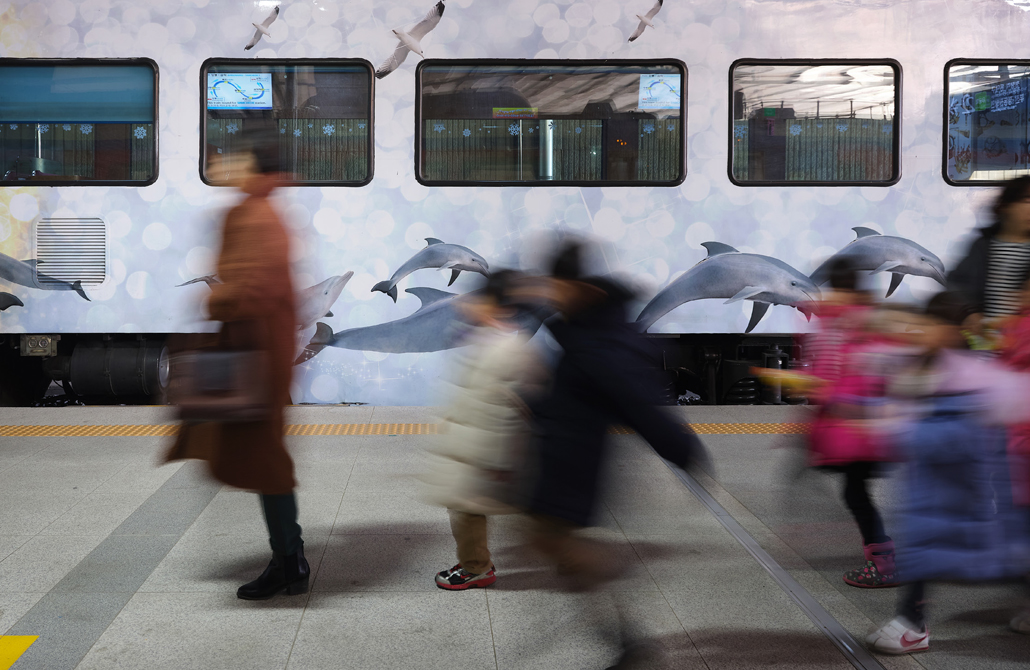
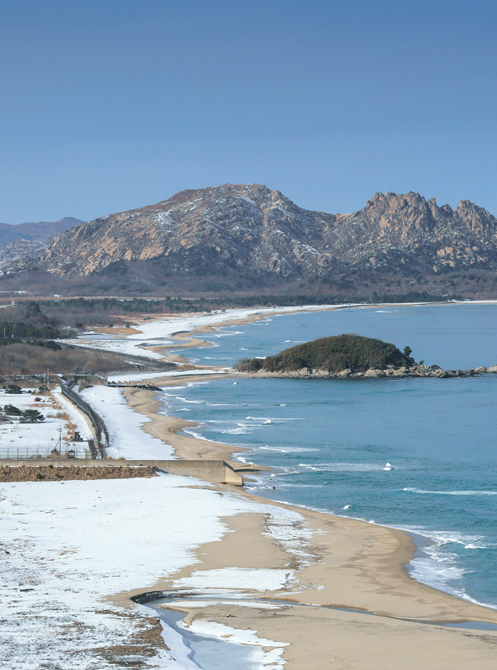

The Sea Train is a tourist train travelling along the East Sea / A view of the DMZ shore looks peaceful from an observatory.
Ski resorts in Gangwon-do Province are popular for their magnificent views and fun slopes. © imagetoday
Again PyeongChang!
Gangwon-do cities will host from Feb. 7-17 the commemorative event “Again PyeongChang!” to mark the first anniversary of the successful 2018 PyeongChang Winter Olympics. Under the theme “Passion, Peace & Prosperity,” a series of programs will commemorate the results of the Pyeongyang Joint Declaration of September 2018 and the Panmunjom Declaration, as well as provide a platform to promote co-prosperity in both Koreas. A facility in the mountain pass Daegwallyeong on Feb. 9, the date the PyeongChang Olympics started last year, will attract VIPs to mark the first anniversary of the games. Gangneung Ice Arena and other sports venues will host cultural performances and K-pop concerts. Thus the PyeongChang Olympics will be remembered as part of Gangwon-do’s history and celebrated for years to come.
Inspired by the World Economic Forum in Davos, the 2019 PyeongChang Peace Forum will serve as the main program on the Olympiad’s first anniversary. Renowned scholars from all over the world will discuss critical global issues such as world peace, humanity, the environment and climate change. The Dongdong (winter) Tongtong Snow Festival will also entertain foreign tourists around the counties of Pyeongchang-gun and Jeongseon-gun and Gangneung Feb. 8-17.
Customized package tours with the themes “2018 PyeongChang-2020 Tokyo-2022 Beijing Olympic Road” and “Hallyu (Korean Wave) & Snow” will target tourists from Japan, China, Southeast Asia and North America as well as foreign residents of Korea. Culture and tourism with Olympic tieups have enabled Gangwon-do and its cities to develop an emerging brand.
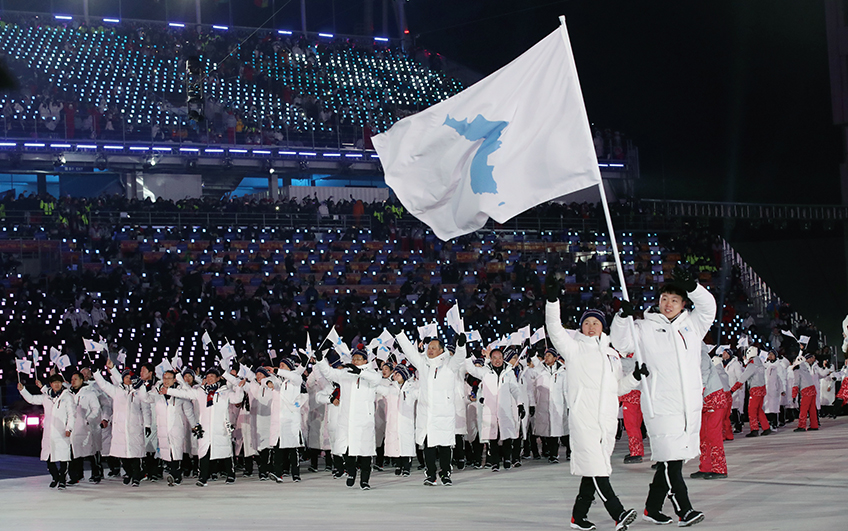
South and North Korean athletes on Feb. 9, 2018, wave the Korean unification flag and march together at the opening ceremony of the PyeongChang 2018 Winter Olympics. © YonhapNews
Other Articles



Gangneung Chodang Dubu












